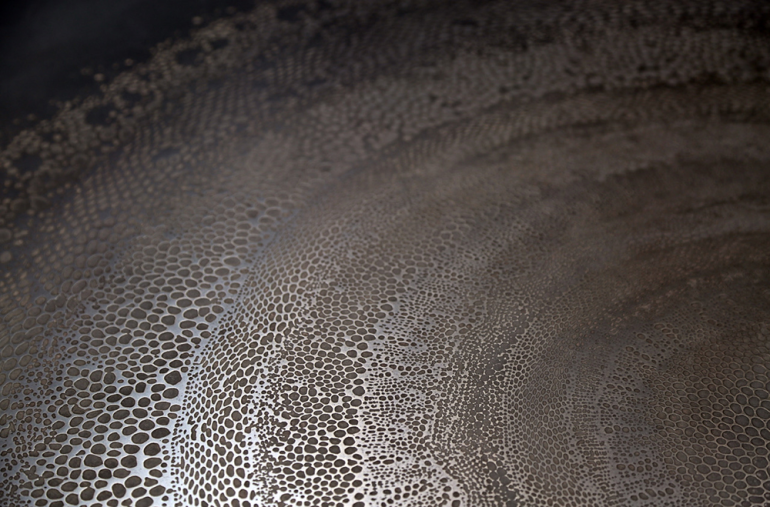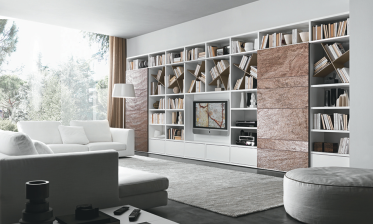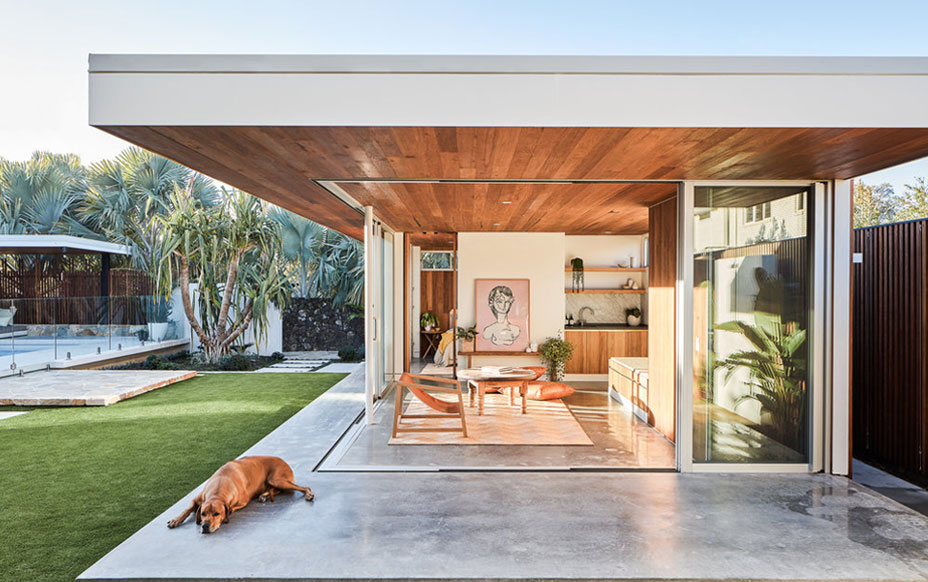
The possibilities of 3D printing on any material are endless. A detail of a Nickel printed pattern by Axolotl.
When media became digitised the world screamed “print is dead” but, in fact, combining digital technology with age-old printing techniques has created an entirely new dimension to architectural surfaces that can be personalised across almost any application.
Our connection with printed matter is more than coffee table books and the Sunday paper, it's like buying the LP when you can download the album on Spotify. It is tangible, textured and large format.

The 3D printed entry to Nina Maya Interiors' The Glasshouse Photographed by Nicole England.
Take the bronze entryway to Nina Maya Interiors’ recent project, The Glasshouse, in the Sydney suburb of Paddington – and yes, you’d be forgiven for thinking it took an artisan hours, painstakingly etching the pattern. In fact it is 3D printed and like a true artist’s work it is completely a one-off – the skill of the modern digital artisan remains equally important as the traditional artist.
That is the great thing about this new technology, combining the feel of the old with the potential of the new, and really the possibilities are endless when you combine an idea with those who know how to make it become reality.
Making our way to the rear of The Glasshouse, this comes to light with a three-panel bronze cortex gate acting as a functional feature wall. Another example of how we can approach surfaces differently, and the texture is as engaging as the finish. These new approaches to printing and surface treatments bookend the home and also showcase the possibilities we have to hand.
The application of this technology isn’t just limited to doors, nor is it limited to metal. Today we can print on virtually any substrate from terracotta to glass, including concrete and timber, with an added dimension of up to 150mm meaning it really does come down to your imagination.

3D printed doors are just the beginning of what this new technology can offer. Left: Grand Designs by Chris Knierem - Design Construct (Photograph by Belinda Knierem) Right: Smith Residence in New Zealand by Di Smith (Photograph by Di Smith).
By engaging a graphic designer or artist in the process, any pattern can be achieved to create a statement piece in the home that is truly yours. HouseLab co-founder Marcus Piper recently pushed the boundaries of this thinking with his Differences series exhibited at the Australian Design Centre.
Printed on aluminium plate, the graphically-geometric series showed how 2 and 3-dimensional printing can hang together as one – playing with light to create depth in what would otherwise be a flat plane.
'It’s like printing an enormous magazine cover and they look different from every angle!' says Piper, who has been designing magazines for the last 20 years and is now endlessly excited about the potential of being able to produce artworks up to 1600x2400mm.

Difference 03 and Difference 01 by Marcus Piper, printed and 3D printed on aluminium at the Axolotl showroom.
And really size is the only limitation here – be it a garage door, a contemporary take on a pressed-tin ceiling or a poolside glass facade it comes down to the mark you want to make, as combining these multiple printed panels opens up a world of opportunity.
So, what lies ahead in surface technology? The sky is the limit but it ultimately comes down to finding the right team who understand the potential and can make the most of it in a way that suits a home. One thing is for sure, print is well and truly alive and it is definitely going places.
THE TAKE HOMES
1. Engaging a graphic designer or artist who understands the process can achieve incredible results.
2. 3D and surface printing can be applied to almost any substrate across applications from doors to bed-heads.
3. Being able to apply metal, concrete or stone finishes with 3D printing can make for a cheaper, lighter-weight outcome, perfect for joinery or feature walls.
4. The options and combinations that can be utilised with this new technology is seemingly endless, something your architect or interior designer will be able to advise on.
–
To find out more about custom printing of architectural surfaces contact Axolotl.
WRITTEN BY HouseLab



